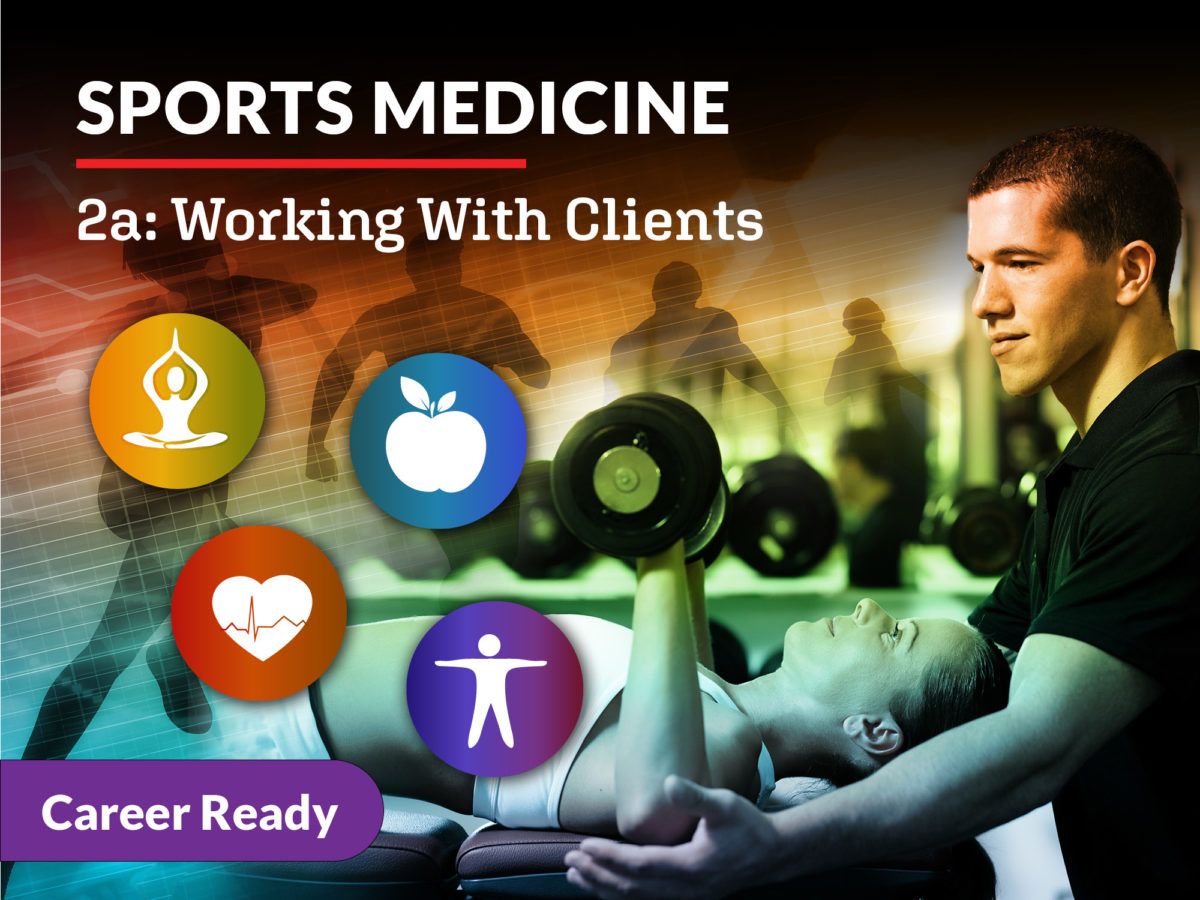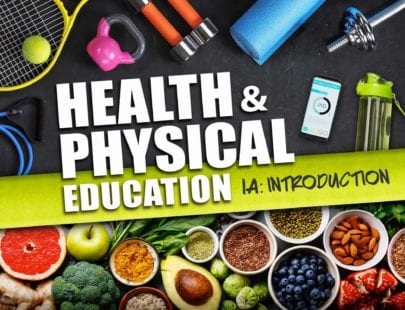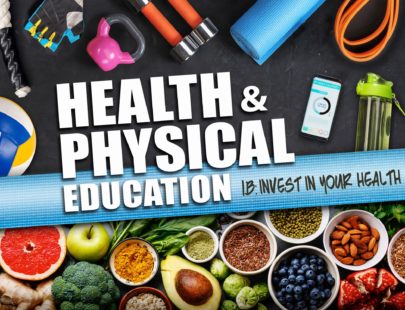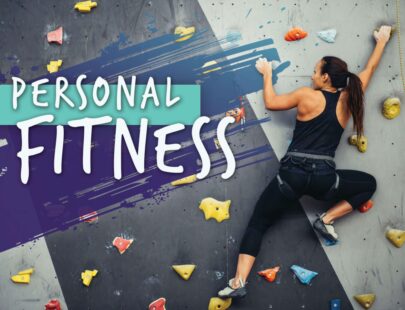
Sports Medicine 2a: Working With Clients
You’ve learned the basics about how the body works and how to attend to athletes’ injuries, but now, it’s time to get personal! Time to personalize and plan for clients, that is! In this course, you will learn to develop dietary and exercise regimes for clients based on their needs and goals. You’ll even have an opportunity to turn plans into action by designing workouts for your own example gym. Let’s hit the ground running and continue building towards a career as a trainer!
Units at a Glance
Unit 1: Exercise Physiology in a Nutshell
Have you ever wondered what happens inside your body to help you make the perfect pitch or run the fastest race or lift the heaviest load? What is the body actually doing in each of the systems to guarantee that you can successfully, without injury, execute the moves you wish to make? Finally, you must prepare the body for these masterful moves, so what steps do you take to ensure your body is ready for that all-out push? These questions should be on the minds of those training for competition and for those wishing to be more physically fit. Thinking about all human body systems and not just the muscular system matters!
What will you learn in this unit?
- Understand the muscular changes that occur due to exercise
- Discuss the kinesiology of exercise and Wolff’s Law
- Analyze the effects exercise has on the cardiovascular and respiratory systems
- Determine how the nervous and endocrine system sends messages to your muscles to cause your actions
- Establish what demands exercise places on the body and how to watch for danger signs that the exercise is leading to damage
- Ascertain the role of the coach or trainer in an exercise scenario
Unit 2: The Basics of Exercise and Training
What is the purpose of creating an exercise plan? Isn’t it good enough to just go to the gym and do a couple of weight machine lifts and a few laps around the track? That’s exercise, right? These questions have long plagued the sports medicine community, along with the general medical and exercise communities. Walking around the block and doing 10 bicep curls is a start, but it doesn’t promote the benefits that most people are hoping for. Planning out an exercise training plan leads to the benefits the general population expects: better heart and lung function, bigger muscles that can sustain action, the flexibility to increase range of motion in the joints, and a better sense of balance to prevent falls and injuries.
What will you learn in this unit?
- Identify the benefits and risks of exercise
- Understand the reasons for including endurance exercises in a workout
- Determine what types of strength modalities increase muscle building
- Establish the correct methods for incorporating flexibility into a strength and conditioning workout
- Define proprioception and ascertain the proper ways to test and enhance proprioception and balance
- Establish the ways to create an exercise plan that increases aerobic, anaerobic, stretching, and balance
Unit 3: Nutritional Aspects of Exercise and Physiology
Eating is rarely a hard thing to get people to do. However, getting them to pay attention to what they eat, along with their foods’ nutritional value, is difficult. Tasty favorites tend to be carbs and fats that are not good for you, especially if fitness is a goal. So how do you know which foods lead to better fuel? Which food molecules bring benefits such as building or repairing damaged tissues? Dieticians work in many realms of sports medicine to assist the work of this very important aspect of fitness, such as in physical therapy clinics, rehab facilities, and other sports and recreation centers, but you do not have to be a dietician to help clients understand what they need to eat and why.
What will you learn in this unit?
- Identify what types of foods should be eaten and when to gain the nutrients needed to accomplish fitness goals
- Understand why body composition matters in health and fitness
- Determine weight management methods and behaviors for achieving fitness goals involving weight
- Decide what types of fluids and supplements best assist the loss of essential water and electrolytes during and after workouts
- Assess the desire for physical fitness and the behaviors that can make fitness goals a priority leading to a healthier, more energetic life
Unit 4: Pharmacology and Its Role in Sports Medicine
“A doctor prescribed it for me, so it must be ok to take.” This is a common rationale for many people who take medication. While there are many good reasons to take prescribed medications or supplements, if no attention is paid to side effects or interactions, those same helpful pills can become harmful. A doctor knows only what you tell them about your current situation, and if you don’t give them the full scoop about everything you eat, drink, and do in a day, their course of action may not be helpful. Oftentimes, athletes take more medications than the general public, so a sports medicine professional should understand the benefits and risks of taking medications while exercising. Even if you don’t end up training athletes, learning how to take control of the medications you put into your system will benefit you for life.
What will you learn in this unit?
- Identify the types of medications used to treat pain and inflammation
- Analyze pain symptoms and the types of pain management available
- Describe addiction and its signs, symptoms, and treatment
- Understand the cycle of opioid medications in pain management and addiction
- Evaluate the benefits and risks of different types of performance-enhancing drugs
Unit 5: Initial Client Consultation
What is a consultation and why do I need one? Isn’t deciding to get off the couch all the motivation I need? Do you really have to spell out the risks for something I could just choose to do in my own home? Is there really a need to encourage me in the benefits of becoming physically fit? I’m here, aren’t I? These questions, and many others, may fill the mind of a person choosing to buy a gym membership. To help that person understand your role in their health, being prepared with answers for those questions is a vital part of the initial consultation. Communication from the start will show them you have their health at the forefront of your mind. This will encourage them to have the same mindset and keep them coming back day after day.
What will you learn in this unit?
- Assess the best ways to talk to potential clients about the risks of exercise
- Incorporate the best strategies for meeting with potential clients, including pre-planning, during the meeting, and follow-up
- Devise the appropriate questionnaires for obtaining personal information, such as occupation and hobbies, lifestyle habits, and the PAR-Q test
- Determine critical medical information for health and exercise
- Ascertain when questions, discussions, or actions necessitate seeking out medical clearance for exercise
Unit 6: Fitness Assessment
When someone wants to start a workout program, that’s great news! Everyone benefits by exercising their body. After the initial consultation and paperwork, it might be tempting for a new client to want to jump right into working out. Before this can happen, it’s important that you do a fitness assessment. Why? A fitness assessment allows you to gather data about the client’s current health as well as what their body can and can’t do. This data will help you plan the right workout for them so that they can reach their goals. Also, it will allow you to identify possible issues that may prevent them from doing exercises they may be eager to perform. You not only need to know how to analyze your client’s capabilities and body composition, but you also need to learn tactful ways to deliver the tough conversations about a person’s limits. Afterall, they rely on you to help them be their most fit self!
What will you learn in this unit?
- Discuss how to prepare for a fitness assessment and what signs indicate the assessment should be stopped
- Ascertain the correct procedures for taking a person’s vitals and the proper exercises to investigate cardiorespiratory fitness
- Determine the appropriate fitness tests for assessing the movements of strength, endurance, flexibility, and agility
- Evaluate body composition, specifically the areas of body fat mass and lean body mass, as well as investigating body posture in static and dynamic positions
- Analyze fitness assessment results and establish when to reassess their fitness based on a specific timeframe, new goals, or lifestyle changes
- Decide on the applicable methods of testing members in small groups or exercise classes and those in various special populations, like children and seniors
Unit 7: Principles of Exercise Program Design
By now you have learned that there are many body types, personalities, and goals. Along with that, there are many different types and choices of exercises as well as many variables to adjust for how those exercises are done. How do you go about creating the perfect workout regimen for each individual you work with? Right now, it might seem like a daunting task. Here, we’ll learn about some of the principles and concepts you need to be familiar with when designing an exercise program. We’ll discuss how to plan each step so that you and your client can work together to achieve their goals.
What will you learn in this unit?
- Apply the main principles of exercise program design in creating workouts for your clients
- Use important concepts to guide your thoughts about how to train or coach your clients to achieve their goals
- Determine the proper way to manipulate the variables of workouts, such as frequency, intensity, time, and exercise selection to maximize their effort
- Assess what exercise plan formats will work best for your clients, especially in the realm of periodization plans
- Create an exercise program for your clients using an organizational format
- Understand the effects of the two extremes on progress for your client, such as detraining and overtraining
Unit 8: Instructional Techniques for Exercise Programs
Have you ever thought about what it takes to get an inactive person motivated and into the gym? Most people who work out in gyms love being active, whether it is outside or inside a gym. They are the ones who become personal trainers, athletic trainers, and physical therapists. If you decide to hang your shingle as a person who can change lifestyles with exercise, be prepared for the reality that the person you will typically work with will be unlikely to have that same drive. Of course, there might be a few exercise-lovers who need something different, but many of the people paying a trainer to help them really need an enthusiastic person who creates dynamic exercise plans and educates his clients in ways that make the learning clear and concise. So how do you, as their trainer, motivate them to accomplish their goals? Let’s find out.
What will you learn in this unit?
- Think about the client’s expectations as they relate to the type of activities that you will include in your exercise plan
- Target a client’s learning style specifically to help better connect them with their workouts
- Create SMART goals with your clients so they have reasonable targets to work toward while incorporating extrinsic rewards for those who need them
- Understand the barriers that your clients might face when they are apprehensive about workouts or continuing to work with you and how to overcome those barriers
- Determine why feedback is so important and how to use it to improve yourself as a trainer
Required Materials
Physical
- Video recording device
- Tools for fitness assessments (ruler, box, timer, etc.)
Software
- Presentation software
- Word processing software
Other
- Friend or family member
- A person to interview
Optional
- Art supplies
- Digital design software
- Poster board
- Markers
- Digital camera
- Spreadsheet software





